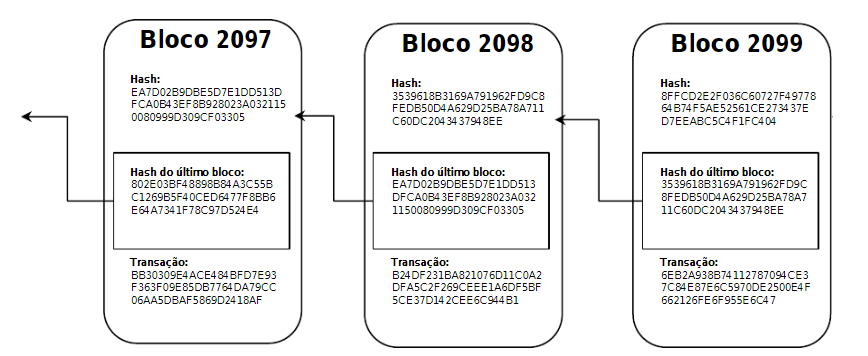It is possible that the word blockchain is new to you, but if we are talking about bitcoin, you’ve almost certainly already heard of it. What you should know is that bitcoin is a virtual currency that has been successful since 2008, the year of its launch, as it can guarantee a little more or less money in your bank account, depending on your business strategy. But what you may not know is the technology behind it: blockchain. Considered to be one of the most important technological revolutions in recent years, companies around the world are looking to learn more about this technology and how to use it to leverage their businesses. So, that’s what we’re going to cover right here!
What is blockchain?
To help you understand better, take a look at this story:
“A customer in a supermarket wants to be certain about the origin of a particular product and that the expiry date has not been manipulated in any way. Through a QR Code, they are able to verify the entire cycle of the supply chain, with the guarantee that the information collected there came from a reliable, anti-fraud system, complete with expiry dates. The processes have been automated by smart contracts and the security has been established by blockchain technology. In the end, the customer takes the product home, confident and happy with their purchase!”.
Blockchain technology is nothing more than a public ledger that makes the entire record of a virtual currency transaction reliable, secure and guaranteed to be without alterations.
According to Alex Monteiro, systems analyst at Atlantico, blockchain is a decentralized system that runs on a P2P network, in which each node in the network has a copy of the records (the ledger) protected by encryption and a mechanism of consensus. It is also possible to execute algorithms or applications in a non-centralized way. “It is possible to guarantee the registration of information such as: the amount of virtual coins transacted, who sent them, who received them and when this transaction was made. Transparency is one of the main features of blockchain.”, he explains.
How it works
In a blockchain, all transactions are stored in blocks that go through the validation process in which the algorithm is executed and, at the end, a hash number is generated for the block. This takes all the information contained in that block into account, such as transactions, timestamp and the hash of the previous block. See the picture below.

Note that each block has a link to the previous block through its hash. This is where the secret of blockchain lies, because, if any data in the block is changed, all other subsequent blocks will also be changed. This is because the data, including the hash of the previous block, is used in the formation of the hash.
Alex explains that it is necessary to repeat the validation process, not only of a block, but of all other posterior blocks. This requires a high computational power and consequently consumes a large amount of energy, therefore any attempted to make an attack becomes impractical. “It is for this reason that blockchain data is considered immutable, safe and reliable, and participants can have their privacy preserved. You can rest easy with the guarantee of receiving correct and punctual data and that your confidential blockchain records will only be shared with network members to whom you have granted specific access.”
In the P2P network, each node has an updated copy of the records that are stored in a ledger, which is one of the characteristics of a decentralized solution. Here, not only do the nodes have a reliable copy of the data, but they also have the ability to perform algorithms or codes via smart contracts, which are protocols that perform computer operations for a variety of purposes such as, business rules, validations, etc.
Guarantee of Security and Effectiveness
Blockchain‘s reliable nature has awakened interest from researchers, startups and large companies that have seen the benefits that lie beyond the world of cryptocurrency.
This is why other blockchain platforms such as Hyperledger Fabric and Rope were created without cryptocurrency in mind. In fact, they have been made with the focus of creating solutions for the corporate market, including the possibility of private or “permissioned” P2P networks. “Unlike the Bitcoin and Etherum platforms where anyone can participate in these non-permissioned networks, permissioned networks control network access through algorithms, access control lists and digital certificates. This brings a more controlled scenario with a guarantee of privacy to the corporate market.” says Alex.
With the evolution of blockchain technology and numerous investments in pilot projects and research, many possibilities are being explored. For example: the use of cryptocurrency as a currency, records of digital assets and materials, people and object identity, access control, payments and transfers, critical information records, diploma issuance, copyright registration, supply chain, security, privacy, process automation and many others. In addition, the adoption of blockchain with other emerging technologies such as IOT, artificial intelligence and 3D tech are also being looked into.
Even though there are a great deal of possibilities presented by this technology, Alex warns that it is necessary to explore them responsibly because there are still some technological challenges to be overcome.
Atlantico is a research, development and innovation specialist. In addition to understanding how blockchain works, it develops analysis of the viability of adoption, and also of which platforms are best suited to the problem scenario. This in turn helps their customers achieve excellence in their operations and develop new disruptive business models.





